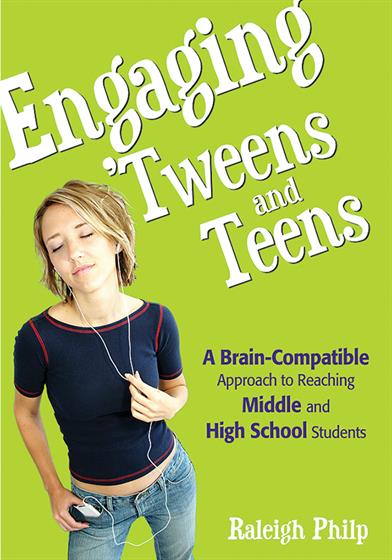Hands-on, Practical Guidance for Educators
From math,
literacy, equity, multilingual learners, and SEL, to assessment, school counseling,
and education leadership, our books are research-based and authored by experts
on topics most relevant to what educators are facing today.

Engaging 'Tweens and Teens
Make connections in the adolescent brain!
This much-needed book incorporates the latest brain research with practical methods for creating meaningful learning experiences in grades 6–12. Guiding readers through brain-based educational practice using vignettes, activities, and a solid understanding of neurobiology, author Raleigh Philp explores:
- Common emotional states of students in Grades 6–12
- Effective techniques that prevent students from mentally checking out
- Familiar technologies to engage learners, such as blogs, wikis, and iPods
- Music as part of classroom instruction—from Classical to Pop to Hip Hop
- Risk-taking behaviors, such as violence and substance abuse
- Grade Level: 6-12
- ISBN: 9781890460495
- Published By: Corwin
- Year: 2006
- Page Count: 232
- Publication date: September 01, 2006
Review Copies
Other Titles in: Brain-Friendly Teaching & Learning | Middle School Teaching Methods | High School Teaching Methods

 This book is a featured text in a Canter graduate course,
This book is a featured text in a Canter graduate course, 
